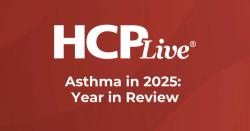Biomarkers in Shifting the Treatment Paradigm of Asthma - Episode 2
Prevalence and Burden of Allergic Asthma
Transcript: Thomas Casale, MD: Shahzad, maybe you could address the prevalence and burden of allergic asthma. It seems like it’s increasing. Are there any factors or reasons that are responsible for that increase?
Syed Shahzad Mustafa, MD: Thanks, Tom. As Stan mentioned, asthma is a syndrome, not a disease, and there are different types of asthma. Allergic asthma is the most common phenotype of asthma, particularly in children but in adults as well. Right now, allergic conditions overall are increasing in the United States, and allergic conditions include asthma, allergic rhinitis, oratopic dermatitis, eczema, food allergies. These are all kind of increasing in general, along with other allergic conditions as well. What’s responsible for driving these increased allergic conditions in the United States and beyond is complicated, but to simplify it, we think it is probably underlying the hygiene hypothesis. Stan touched upon this immune response of T2 [type 2] high versus T2 low. We do see an increased recognition and diagnosis of these allergic conditions, including allergic asthma.
Thomas Casale, MD: Are there any patient factors that increase the risk of having an asthmatic episode, especially an allergic asthma episode?
Syed Shahzad Mustafa, MD: Again, everyone has their own specific triggers. In children, viral triggers are common. Stan, again, mentioned rhinovirus. As we get older, asthma triggers become more pollen becomes a more common trigger in asthma. In the United States, grass pollen and ragweed are more common triggers for adult asthma as compared with viral infection. Again, that’s a little bit overly simplistic. It’s not binary, and people have various triggers. Underlying allergic inflammation may contribute to chronic asthma and even predispose individuals to having a higher propensity of viral infections. Again, even if you don’t have the tight history of “I’m around this allergen—whether it’s a pet or a pollen—“and I’m having asthma,” allergic drivers may be contributing to underlying inflammation, which we hope to identify because it may help us benefit these individuals with other controlling medications, controlling their asthma, which, in turn, may also protect them potentially from viral infections. Right now, that’s particularly timely, given what we’re going through with this pandemic and optimizing asthma care.
Thomas Casale, MD: That’s a good point, and I think when we talk a little bit later about potential treatments of severe asthma and looking at drugs like omalizumab, dendritic cells express high-affinity IgE [immunoglobulin E] receptors in IgE, and it’s been shown that when they have a big expression of that, they decrease their interferon gamma production in response to viral infections like rhinovirus. So, high-affinity IgE receptors—sometimes that can be an aggravating factor for people with allergic asthma. By getting rid of the IgE bound to dendritic cells, that may restore and protect you somewhat from viral infections as an exacerbation factor, and that’s what drugs that would reduce IgE high-affinity receptor would do.
Transcript Edited for Clarity



